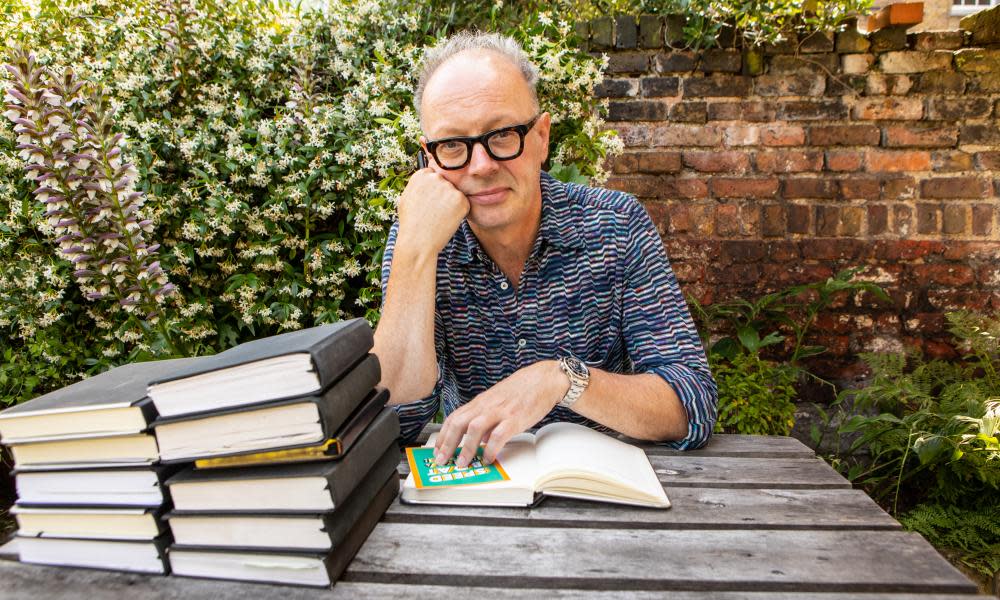Molly & the Captain by Anthony Quinn review – artful love stories and a gripping mystery

Anthony Quinn’s oeuvre – eight novels, all of them more or less historical, most quietly brilliant – seems worthy of greater celebration. He’s a fine prose stylist, able to evoke the past with a vivid immediacy that must owe some debt to his former career as a film critic. At his best – in the glorious Curtain Call (soon to be a film starring Sir Ian McKellen) or Our Friends in Berlin – he is as good as Kate Atkinson or William Boyd, authors who seem useful points of comparison.
Molly & the Captain is a rollicking read. Sweeping across centuries in its three interlinked sections, it summons the past effortlessly, as the vehicle for a plot that is both intricate and immaculately constructed. It feels like a kind of consummation of his career to date, giving us a series of moving love stories, a gripping mystery and some unforgettable characters, all of them tied together by their relationship to two paintings: Molly and the Captain, a work by the fictional 18th-century artist William Merrymount (who appears to be based upon Gainsborough), and Portrait of a Young Man, by Merrymount’s daughter, Laura.
Molly & the Captain is Quinn’s most ambitious book to date and decidedly his best
The first section of the novel, almost a novella in itself, is a collection of writings by Laura Merrymount. In her journal entries she is smart and perceptive, writing fondly of her father who is known as “the finest Face painter in England” and her sister, the “wild and headstrong” Molly, who is prone to “fits” and “delirium”. We also read Laura’s letters to Susan, a cousin in Sussex, in which she describes the glamour of the family’s life in Bath and London and, increasingly, the attentions of two people: the rakish Mr Lowther and an actor, Mrs Vavasor.
The painting from which the novel takes its title is of the two sisters – Laura is named “the captain” for her habit of ordering the family around. It is judged Merrymount’s masterpiece, a painting that showed he was “no mere phizmonger, but an artist endowed with great tenderness of feeling”. After a series of revelations that upend the happy stability of her world, Laura sets about painting her own great work, Portrait of a Young Man.
The next section skips forward 100 years to the end of the 19th century. Our hero here is Paul Stransom, an artist with a twisted spine and a gifted eye. “Talent had come to him as mysteriously as disability,” we learn. Stransom lives with his sister, Maggie, in Chelsea. She is a teacher, disappointed in life and work, who in her late 20s has “the impression of an interesting future behind her”. Then, suddenly, she is being courted by two men, one of whom offers her Portrait of a Young Man.
The final section of the novel takes us forward to 1983. The backdrop is familiar from Quinn’s most recent novel, London, Burning, all punk and denim and political turmoil. Nell Cantrip is an artist in her early 60s whose career has been suddenly revived. Nell’s daughter, Billie, is an actor in her late 30s starring in a film with a 23-year-old rock star, Robbie Furlong. Nell discovers that she is related to the artist William Merrymount; Billie starts reading Merrymount’s daughter’s recently discovered journals. Again, a love story emerges, although this one threatens to tear the family apart. We finish with the re-emergence of Portrait of a Young Man and a startling revelation.
Molly & the Captain is Quinn’s most ambitious book to date and decidedly his best, knitting together three quite distinct eras and in doing so alerting us to that which endures: beauty, love and great art.
Molly & the Captain by Anthony Quinn is published by Little, Brown (£16.99). To support the Guardian and Observer order your copy at guardianbookshop.com. Delivery charges may apply


